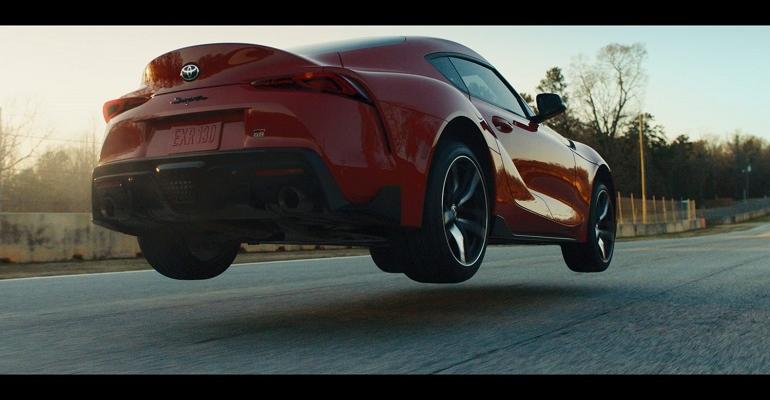It’s already been an eventful year for the automotive industry. Let’s review some of the biggest trends and headlines we’ve seen so far and consider what the future might hold.
Shake-Ups and Industry Disruptors
We can’t discuss the industry in 2019 without mentioning tariffs, so let’s start there.
The U.S. and China have made a lot of noise by threatening to impose new or raise existing tariffs on automobiles. The potential of higher costs is affecting factories worldwide, and the situation is made more complex by the fact that many auto makers have plants in countries other than their home base (for example, GM builds cars in China; BMW in the U.S.; VW in Mexico).
Staying with political themes, the not-yet finalized Brexit negotiations have already done damage to Britain’s auto industry, with Ford and BMW announcing that their investments in UK manufacturing will be affected.
Fiat-Chrysler, under the leadership of the late Sergio Marchionne, actively looked for merger opportunities. Those efforts didn’t die with him; a short while ago, FCA announced a potential merger with Renault.
But with or without Nissan, whose former head, Carlos Ghosn, was sitting in a Japanese jail? Almost as quickly as the merger news spread, it was called off. Look for an update in our “2019 End of Year” piece.
Closer to home, Tesla’s CEO Elon Musk made news by going head-to-head with the Security Exchange Commission.
Meanwhile, the Tesla Model 3 is selling well, but is it good enough to keep Wall Street happy? While Musk is perhaps the most-recent industry CEO to make the headlines, we must give a tip of the hat to Lee Iacocca, one of the first auto execs to become a household name, who passed away recently. Much deserved credit goes to Lee as “father of the Ford Mustang” as well as “father of the modern (Chrysler) minivan.”
Sales Trends and What’s New
New vehicle sales remain strong and it’s no surprise that trucks, SUVs and CUVs were the big winners during the first half of 2019. These “non-cars” now represent almost 70% of new light-vehicle sales.
A brand as ubiquitous as Chevrolet cannot have enough crossovers and they brought back the Blazer name on their newest addition. What’s more, if you told me 30 years ago that a high-end German luxury car maker like Mercedes-Benz would have five SUVs in its lineup (GLA, GLC, GLE, GLS, and G-Class), well, it would have sounded unbelievable.
The Asian brands, especially Hyundai and Kia, have shown great strength by launching new large SUVs in a market which seems to say, “There’s no such thing as too big.”
Of course, full-size American pickup trucks still sit at the top of the heap. Recent press has highlighted former luxury car buyers who have gravitated to fully-loaded GMC Sierra Denalis, Ford F-Series trucks, and Ram pickups, paying over $70,000 for their top-shelf picks. The just-announced Jeep Gladiator will add new competition for some of these vehicles. (Its average transaction price approaches $60,000.)
While GM, Ford, and Chrysler have seemingly abandoned the 4-door sedan, the segment is far from dead. Just ask Honda and Toyota, who continue to send upgraded Accord and Camry sedans into battle with each other.
And the near-luxury market has lots of choices, exemplified by recent launches from Audi, BMW, Genesis and Volvo, among others.
The sports car is dead! Or is it? Ask Toyota, who brought back the fabled Supra name after a long hiatus. Toyota may have hedged its bets; the Supra platform is shared with the new BMW Z4, which saved on development costs. And is it too early to laud the launch of the mid-engine C8 Corvette? Maybe it is.
The “Future” of Transportation
After a stretch of years where autonomous-vehicle technology was touted as inevitable by tech companies and manufacturers alike, it seems things have quieted down on the self-driving car front.
A few highly-publicized accidents during 2018 left these technologies with a pretty big black eye. Even without taking these incidents into consideration, it seems that everyday consumers are still wary of self-driving technology. We’ve also heard more realistic predictions (10 to 20 years) of a timeline to reach full autonomy.
Of course, technology features haven’t gone away entirely. In lieu of full autonomy, consumers are showing an increased interest in more practical “semi-autonomous” technology applications.
This broad and fast-growing category includes forward-collision warning systems, adaptive cruise control and lane-departure correction systems, just to name a few. Expect these safety advancements to trickle down to lower-priced mainstream vehicles.
The way we own cars is changing, too. A trend that I’ve been keeping a close eye on over the past year is vehicle subscription services.
Younger drivers, particularly those who live in urban areas and whose driving needs can change at a moment’s notice are drawn to these services as an alternative to leasing a vehicle.
Depending on the specific plan, an individual has access to several vehicle models and can swap between them as they see fit, all for a set monthly fee that includes maintenance, insurance and taxes. Several manufacturers already are offering their own subscription services which provide access to select models.
However, 2019 has also brought some more affordable and varied options to the table, which would allow drivers access to vehicle options from more than one manufacturer.
Most notably, Hertz recently entered the field with a subscription model that includes all the above and allows two swaps per month. It’s only available in Austin and Atlanta for now, but something to keep an eye on.
 For decades, the automotive industry in America has been seen as a harbinger of progress and prosperity. (Wards Industry Voices contributor Richard Reina, left)
For decades, the automotive industry in America has been seen as a harbinger of progress and prosperity. (Wards Industry Voices contributor Richard Reina, left)
In the past few years, we’ve seen tremendous changes take place, some of which have been initiated by automakers looking to shake things up and some of which came about as a response to shifts in consumer demand and trends.
Looking back at the first half of 2019 one thing is clear: American consumers are still engaged in a deep love affair with personal transportation, even as new technologies continue to disrupt how we purchase, outfit and even drive our cars.
Richard Reina is product training director at CARiD.com





